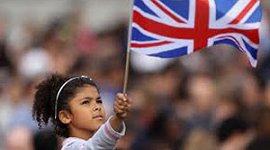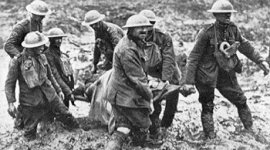
THE SILENCE OF THE CROWDS
What do we make of the growing trend for a minute’s silence to mark public trauma?
A week after the awful atrocity visited on British tourists to Tunisia in the summer of 2015, the nation held a minute’s silence in honour of the victims. A week after the 7/7 London bombings, two minutes silence was held, followed by a further minute’s silence on the tenth anniversary. These decisions seemed right, though there is something of an ad hoc feel about them. How do we decide whether and where to mark tragedy in public, and how do we distinguish between different kinds of trauma?
The beauty of a minute’s silence is the space it gives to people to pay their respects and to the victims in offering a sense that others care enough to pause for a moment. There is an outward display of memorial, but each person can think their own thoughts at that moment without being judged by others. This limits the temptation to care conspicuously and allows disparate feelings and opinions to be held in a common place.
In some environments, the culture of brief silence has become almost ubiquitous. Football fans will spend a proportion of a season’s games observing a minute’s silence for different kinds of bereavements. In addition to national issues, it is common to remember the lives of those close to the game or club. This evolution shows the difficulty in knowing where to draw the line without causing offence. At football grounds it has become popular to mark a life with a minute’s applause, with the lingering sense that this is more to do with inhibiting tasteless chanting from the away fans than finding a more appropriate way to honour a life.
The developing trend of memorial silences may be traced back to the successful campaign of the Royal British Legion to call for two minutes on November 11 in addition to the established observation of Remembrance Sunday. The Legion was afraid that the war dead would soon be forgotten as a generation died; declining church attendances also meant that fewer people were making the observance on a Sunday. In a way, November 11 became a fresh expression of remembrance, taking account of the different way people were using Sundays. The wars – and victims - of the twenty-first century mean this form of remembrance will endure.
Without some clear guidance over how we memorialise national tragedy, there is a risk that practices will develop piecemeal. Why 7/7 and not 9/11, where more British people died? Why two minutes silence for the war dead but three minutes for the victims of the Boxing Day Tsunami? A sound yet flexible policy over public remembrance may help us to cohere as a nation but there are risks we may have to bear at times. When the French held a public silence to commemorate the death of Charlie Hebdo cartoonists in early 2015, the moment was interrupted by some Arab Muslim students in schools, which created more distress, exemplifying what divides the French alongside what unites them.
The Madrid bombings in 2004 led the Spanish government to call for five minutes silence, which is more challenging and costly than the silences we observe in Britain and perhaps more commendable. A minute passes very quickly; five minutes properly inconveniences people and asks something more than perfunctory of them. There is a sense of discomfort about the act which prompts engaged citizenship.
These moments need not be vacuous. Many people fill such times with prayer for the victims of war, terrorism and natural disaster. If the increase in public memorialisation stems from a genuine desire to offer symbolic support to those whose lives are torn apart, Christians are presented with the daily duty of intercession. This is more than an absence of noise and physical activity, it is a spiritual assault in Christ on the powers which seek to enslave and destroy our common humanity. This is the rhythm of discipleship; the inward and invisible grace of which public memorial is the outward and visible sign.
POPULAR ARTICLES

Obama's Covert Wars
The use of drones is going to change warfare out of all recognition in the next decades.

Through A Glass Starkly
Images of traumatic incidents caught on mobile phone can be put to remarkable effect.

What Are British Values?
Is there a British identity and if so, what has shaped the values and institutions that form it?


